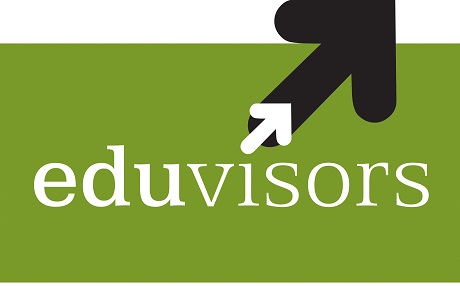Next Wave of Edtech in India
- March 30, 2021
- Posted by: Eduvisors
- Category: Blogs

As the Edtech sector scales new heights with each passing year, experts agree that the next wave of Edtech in India is set to redefine the face of education in the country. Recognizing the immense potential vested within Edtech, the government and regulatory bodies have made a strong case for the digitization and modernization of education within the country through the recently launched National Education Policy (NEP) 2020, that categorically focuses on improvement of infrastructure for technologically enabled learning across educational institutions.
Even during a year of peril and trials, the sector has shown phenomenal progress by any metric of measurements. India is already home to two unicorns that provide Edtech services and products globally. Even within the investment space, 2020 saw over 100 unique deals within the sector having a cumulative value of over $1.5 bn in investments. At a macro level, the Edtech space has now become the third highest investment attracting sector in India, outperforming even Ecommerce and Consumer Tech
Top 5 Sector Stack in India

The global Edtech market is a diverse and rapidly growing industry with a large runway across the business lifecycle, from early-stage startups to middle-market companies to publicly traded companies. It continues to garner a lot of attention not only from long-time industry veterans but from generalist investors as well. Across the three main education categories (PreK-12, post-secondary, and corporate training), technology is infused throughout the life of a learner. The leading sub segments within the industry include after school classes, online certifications and higher education, professional skill development, vocational learning etc. that each operate as individual verticals within the sector
A closer look at the key indicators and mainstays of the sector that will propel its growth in the coming years, reveals a promising picture for the learners of the future who stand to benefit from a more engaging and elevated experience, suited to their abilities and time frames while ensuring that learning continuity is maintained and remains self-paced. It is therefore important to mention some of these indicators:
Shifting Focus of the B2B Segment
While the B2B space has existed for a long time, the focus of Edtech players has now shifted towards teachers as opposed to the overall backend management. The B2B Edtech startups and services, which enabled teachers and educational institutions to take their work online, gained momentum as the schools and after-school-classes (tuitions) remained shut. This not only ensured that learning remained uninterrupted but also prepped up traditional institutions for the future of Edtech. The B2B Edtech firms have received total funding of $31 million between 2017-2020. A large portion of the funding is attributable to enterprises that made shifting focus to teaching and learning online possible. Interestingly, companies that facilitated audio and video conferencing also released special, education centric versions of their product that helped teachers manage and deliver classes better indicating that even companies outside the Edtech space want to carve out their standing due to the immense vested potential in the upcoming sector.
Gamification & Emergence of Edutainment
In addition to the life like animations and visual representations of otherwise theoretical content and concepts, Edtech startups also focus on making the activity of learning more engaging and interactive. Gamification has gained immense popularity among Edtech startups — like Toppr, CueMath, BYJU’S and others — because of substantially improved learning and outcomes. Learning through games and puzzles also makes it easier for students to understand a concept in a more practical way and generate greater interest. Beyond gamification, startups have also started taking steps to make education more interesting with the medium of interactive videos, music and proprietary stories-based curriculum. Parents too have expressed their preference for an interactive approach to learning as they observe their children learn concepts much faster than conventional schooling classes
Golden Days for Coding & Programming
Undoubtedly, one of the talked about verticals within the Edtech space in 2020 was the coding and programming for young children. Claiming to enable logical thinking, problem solving and creative thinking skills in children, the segment is responsible for a large portion of the overall sector momentum. In fact, the situation in India is no different from the global scenario where its overall market is pegged to be worth over $2 billion. Indian coding players such as Whitehat Jr, Toppr etc. have now scaled operations even outside India, and provide personalized one to one classes to aspiring learners over a 2 year period on an average. As more parents warm up to the idea of teaching their kids to code to create better opportunities for their future, dominant players are sure to ride the coding wave for years to come more so with the regulatory mindset changes taking place that postulate coding for all children in schools from grade 6 onwards.
Upskilling & Professional Development
The pandemic has shown how quickly work itself can change and being upbeat with the latest trends can help minimize the shock. About 122 Mn people lost their jobs as of August 2020, as wounded companies accelerated towards digital transformation. Organizations started making data-driven decisions making more important aspects of their survival, and the impact of Edtech will also be seen beyond schooling into upskilling and reskilling. Since digital jobs were the profiles to grow amidst a slowing market, startups in the space had the impetus to look beyond school education and focus on professional development and lifelong learning aspects – one that offers learners the opportunity to take up relevant and in-demand skills that can shape their careers in the long run. Leading startups in the segment saw a steep rise in their user base (~2.5 times) since the pandemic and the changing consumer mindset is sure to drive demand for the years to come.
So, what more can be expected of the Edtech space?
The big challenge for startups will be bridging intrinsic gaps such as the digital divide, equitable access to the internet, power and hardware such as computers or smartphones, along with addressing the affordability quotient — both of which are lacking at the moment. Given the trends and indicators discussed previously, it can safely be assumed that the following will additionally be the critical changes that can be expected:
- Greater adoption of learning management systems in schools & colleges
- Vernacular and local language content will take center stage
- Assessments & examinations will be digitized through the use of proctoring solutions
- Teacher focused digital transformation platforms will be designed
- AI & ML shall drive the design philosophy of upcoming innovative learning models
To sum up, there are about 4,530 active Edtech startups in India but even the number is bound to increase rapidly with the increased interest of both investors and customers. The year 2020 was truly a golden year for Edtech and the same momentum is expected in 2021 and beyond as well and even policies are bound to get more Edtech
Do you have questions about how Eduvisors can help ? Send us an email and we’ll get in touch shortly.
